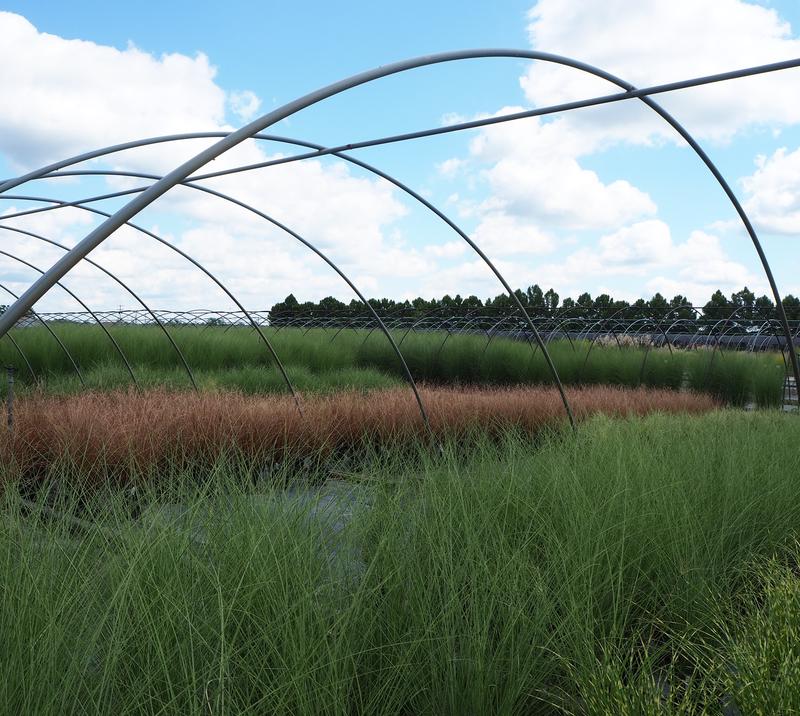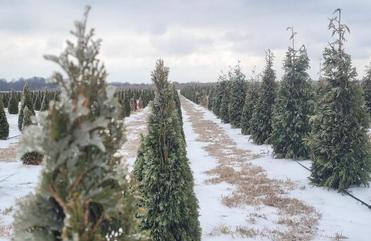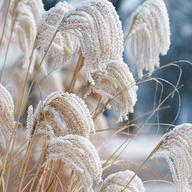Best Ornamental Grasses For Creating A Screen
Ornamental grasses can be used for a variety of reasons, but one reason people may overlook is using them as a living screen. Many people think of using evergreens as living screens, which they do work well for, but several grasses can be a great alternative and take up less room too.

Ornamental grasses can be used for a variety of reasons, but one reason people may overlook is using them as a living screen. Many people think of using evergreens as living screens, which they do work well for, but several grasses can be a great alternative and take up less room too. Let’s say you live in a neighborhood where the houses are fairly close together. You have a patio off the back of your house that you love to use for entertaining. One of your neighbors seems to always be out on his patio every time you want to be out on yours. You have a flowerbed along the patio between the two of you, but it is only four feet wide. You think to yourself “what can I plant in that narrow of a space to screen out my neighbor?” You run through a list of Holly, Arborvitae, Yews, Junipers, and Boxwoods, but they either get too big, grow too slow, or are too prickly.Then it hits you “ I’ll use grasses!” They won’t be there in the winter, but you probably won’t be out on your patio very much in the winter either.
In this blog I will go over a few grasses that would work great in a situation like I described above. All of these grasses should be cut down to about four inches in late February or early March.
Maiden Grass – Miscanthus sinensis ‘Gracillimus’

This is probably the most used of all the taller varieties of ornamental grasses. Maiden Grass has a narrow green leaf blade with a white stripe down the center of the blade. Even though it has the white stripe it is not considered a variegated grass because you really don’t notice the stripe unless you uncurl the blade and look for it. Maiden gets five to six feet tall and four to five feet wide. It is a clumping grass so each year it comes back the clump will expand a little more. It gets a plume in late September that comes out a maroon tone and then turns a creamy silver before turning brown by the end of the fall. Although the grass turns brown in late fall, it is still attractive enough to leave alone until late February. Maiden Grass is extremely versatile and hardy. It will grow best in full sun and can grow in about any soil.
Morning Light Grass - Miscanthus sinensis ‘Morning Light’
This is almost exactly like Maiden Grass except it doesn’t get as tall and it is variegated. Morning Light only gets about four feet tall and three to four feet wide. It has the same narrow blade as Maiden, bu t this one has two white stripes on the outside of the blade. It is a very attractive grass and would work well in an area that Maiden might be a little too big for.
Plume Raven Grass-Saccharum ravennae

Plume Raven is the Pampas grass of zone five. It has a wider blade than Maiden and is a little more pale green. The grass gets six to eight feet tall and four to six feet wide, but it shoots up a plume in September that gets up to twelve feet high. The plume is purplish when it first comes out then it turns to a silvery color before turning brown in late fall. Most people leave the grass until they trim it in the spring, but because it gets so large it can also become a little messy by February.
Zebra Grass – Miscanthus sinensis ‘Zebrinus’

Zebra grass is variegated but unlike the Morning Light that has the stripe running with the blade, Zebra has a horizontal yellow stripe. The blade is wider than Maiden and a brighter green too. The horizontal stripes are sporadically spaced up and down the blade. Zebra grass gets five to eight feet tall and four to six feet wide. It has a light pink plume that shoots up just above the grass in late August. The grass and plume turn brown in late fall. Zebra grass can tend to be floppy, but it makes a different looking screen or accent plant.
Japanese Silver Grass – Miscanthus sinensis ‘Cosmopolitan’

Big Blue Stem Grass – Andropogon gerardii

If you like to use natives this one is for you. Big Blue Stem is native to Missouri. It gets four to six feet tall and two to three feet wide. When it comes up in the spring the leaf blades are bluish in color, but they turn more to green by summer and then to bronze in fall. The seed heads are very unique on this grass. They rise above the grass in September and are kind of like a plume, but are in three parts. Some people describe the plumes of Big Blue Stem as looking like a turkeys foot. The plumes are purplish in color and then turn to brown. Another difference in this grass versus the others I have described is that the others are all clumping grasses where as this one is more of a spreader. It can be easily controlled, but actually would work great in an area where you have an erosion problem because it has such an extensive root system.
These six grasses are all great for the Midwest. They all are very hardy, will grow in just about any kind of soil, work best in full sun but can take some shade too, and they all can make an excellent living screen.


